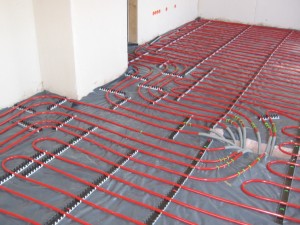
Hot Water for 20 Years: What Makes Noritz Tankless Water Heaters So Durable?
Durability is one of the most important qualities to consider when buying anything, often even more critical than price. Unless you’re 17 and clueless, you probably wouldn’t buy a ’96 Pontiac for $1,200—it likely wouldn’t last you the drive home.
When it comes to your water heater, you might be leaning toward a storage tank-type over a tankless only because the former is usually less costly up front (even though it actually isn’t in the long run). However, consider that while a tank-type water heater typically lasts 10-12 years, a tankless can keep on kicking for up to 20.
Why is that? Randy Oshiro, Assistant Manager of Engineering at Noritz, explains why tankless units will outlive tank-types.
They work less (and not in a bad way): To begin, tankless units are not operating nearly as much as tank types. Most families only use about an hour of hot water per day. Tankless water heaters provide hot water on demand, so the rest of the time is not spent wearing themselves out.
A tank-type, on the other hand, always strives to ensure that the stored water is hot and ready for whenever you turn on the faucet. This means it’s constantly cycling on and off, even for that long stint of time when no one is home during the day, thus causing unnecessary wear and tear and higher energy costs.
They’re built tougher: You may think that those giant, hulking tank-type water heaters must be built stronger with all of that steel, but it’s easy to forget steel’s inevitable weakness when water is involved—rust.
Noritz tankless water heaters are manufactured using mostly copper, plastic, or stainless steel; therefore rust won’t be an issue. They may be considerably smaller than tank-types—which is actually a plus because it saves space—but size doesn’t translate into strength and longevity in this case.
Water is less “hard” on them: Water hardness refers to the percentage of compounds in the water, like calcium and magnesium. “Hard” water will have a larger percentage of these minerals. In a tank-type unit, these compounds will gradually build up around the flue. Some will break off and settle at the bottom. Eventually, this buildup will impact heater efficiency (the fraction of available energy used to heat the water, as opposed to going up the flue) and even shorten the effective life of the storage tank.
The buildup potential is much lower in a tankless water heater because there are few places for it to collect. Even if some deposits do accumulate, the water rushing through the system often suffices to remove them.
Thus, under comparable conditions, a tankless unit will last longer than a tank-type. To maximize the chances of your water heater lasting a full 20 years, Oshiro offers the following tips:
Make sure to install it properly: In addition to having your unit professionally installed, it’s important to consider location as well. For example, if you install it in a laundry room, it may suck up damage-causing lint.
Perform regular maintenance: It’s important to descale your tankless water heater periodically. The frequency depends on your region’s water hardness. (See this water hardness map.) Preventative maintenance can go a long way to maximize unit life.
Ultimately, tankless water heaters’ longer life cycle does something magical to the higher up-front cost—it makes it irrelevant. In some cases, a tankless heater can last up to twice as long as a tank type! So it’s not inconceivable that you may have to buy two tank-type units during the lifetime of one tankless unit. If that doesn’t scream “go tankless,” then what does?








